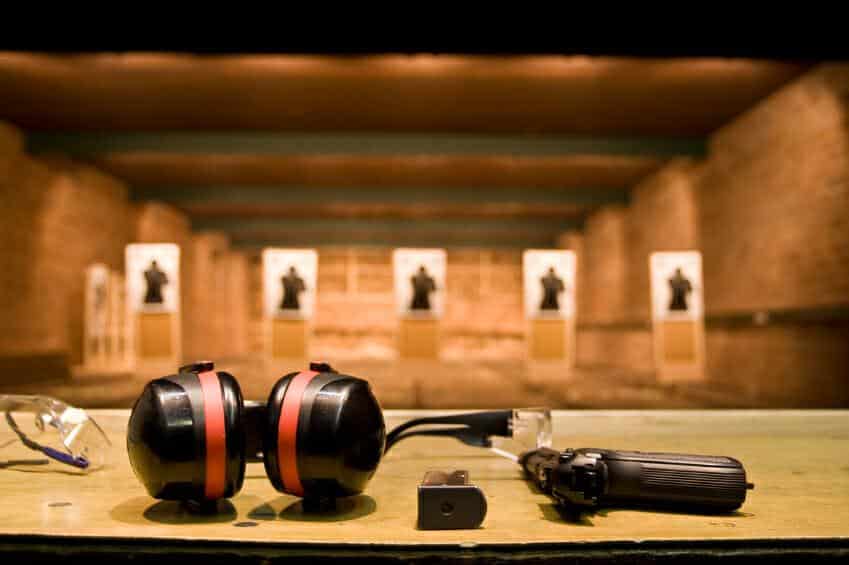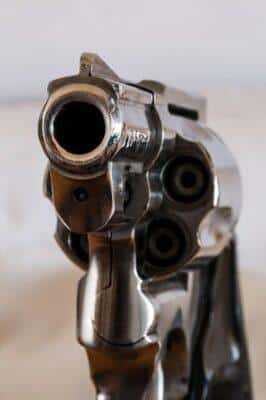As an instructor of many new shooters, I’ve come to expect certain equipment problems that crop up repeatedly. Here are some insights to help you not be that person whose enjoyment of shooting is diminished — or worse, injuries are sustained — as a result of gear issues on the range.
1. Inadequate pistol holsters.
Holsters, whether for open or concealed carry, come in two general types: rigid ones that stay open wide when the gun is drawn, and soft ones on which the opening collapses to some degree when empty.
There’s nothing wrong with a softer holster as a storage device for a gun that’s rarely used, or for uses in which you have lots of time to re-holster the gun after use.
Where problems arise is when people attempt to use non-rigid holsters for serious training, like rapid draws. Usually, they fail to position the gun in the same place every time, forcing the user to fumble around during the draw. If it’s a life-or-death situation, or a serious defensive shooting class you’re preparing for, soft holsters are a poor choice.
Fully collapsible holsters, like the soft one I wear in my waistband as a concealment aid, are great for comfort and everyday wear. For practice, I must remove the holster, safely re-holster the gun using two hands, and then put the whole business back in my waistband. There’s nothing fast about it. If I were in a situation where I had drawn my pistol for self-protection and the threat is still active, and I still had the gun out when police arrive on scene, I’m better off dropping my gun to the ground and trusting its drop-safe construction than fooling with a holster, gun in hand, and risking the appearance of being a threat to police.
The most frequent problems I see with soft-sided holsters, purses included, are safety issues. People often fail to realize they’re passing the muzzle over their own hand during the draw or re-holstering. On belt-mounted holsters that feature retention straps that cross over the backstrap and snap into place, risk of shooting oneself in the leg is presented by not making sure the holster opening is clear of the strap before inserting the gun.
The Self-Defense Weapon That Doesn’t Require A Firearms License! [2]
There’s a time and place for soft-sided holsters, and a time to choose a rigid one. Although rigid holsters generally cost more, acceptable ones can be found for less than $45. That’s cheap prevention of a disabling injury.
2. Revolvers that aren’t maintained.
Virtually every presentation geared toward new shooters touts revolvers as an easy, user-friendly choice. Yet they are by far the most problem-riddled firearms that show up in my classes. Why? Lack of maintenance. Most users pull out or borrow a revolver, or ammunition, that’s been in storage and neglected for years. Then it’s a surprise when the cylinder won’t rotate, or won’t open, or when bits of hot shrapnel are spewed back to the shooter’s face (one reason you MUST wear glasses when shooting).
Revolvers, like any firearm, require occasional maintenance. Lint and dust can build up around the extractor. Repeated firing can change the barrel-to-cylinder gap, or cause excessive side-to-side travel when the cylinder is closed, among other problems. Any of these can cause a revolver to malfunction. Attention to cleaning and lubrication, even when in storage, can go a long way to prevent frustrating or unsafe experiences with your revolver.
3. Handgun sights that aren’t up to snuff.
Whether they’re an aftermarket add-on or factory-made, a loose, broken, or fallen-off sight can ruin your plans for practice. Regularly check your front and rear sights. Ensure they’re not cracked or broken, missing parts like the day-glow or tritium insert, or loose.
There are many advantages to high-visibility sights, especially for that all-important front sight. Many aftermarket front sights are elongated to accommodate light-collecting tubes or other features. Especially with those designs, but with all models, there will at some point be leverage exacted on those sights, usually during re-holstering. Knowing this may affect what sights you select to replace the stock ones.
Many times, it won’t be immediately obvious that there’s a problem with the sights. Often the first sign is when shot patterns on target begin to be uncharacteristically inaccurate and random, especially for experienced shooters. Choosing sights made of steel instead of plastic can increase the odds that your sights will remain solid over time. Installing sights according to manufacturer’s instructions, particularly those that screw in, is not to be overlooked. It’s tempting, but can be disastrous, to over-tighten screws, for example. Follow instructions, and be vigilant about inspecting sights at the beginning and end of your practice time.
It’s Not About the Money
Usually with firearm equipment, the least expensive choice of product delivers the most disappointing results. However, it’s almost never true that the priciest choice is superior, either. Choosing reputable guns and gear is important, but the biggest advantage is gained by paying attention to the condition and maintenance of equipment. The only investment needed is a little time.
What problems would you add to our list? Share them in the section below:

